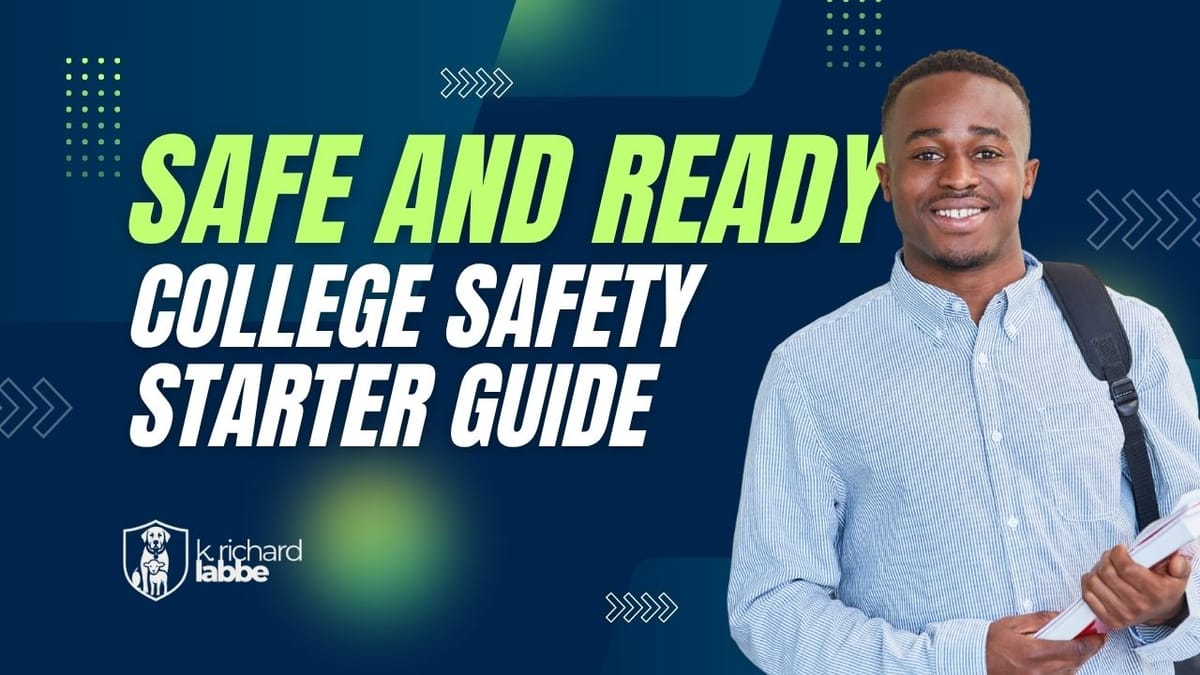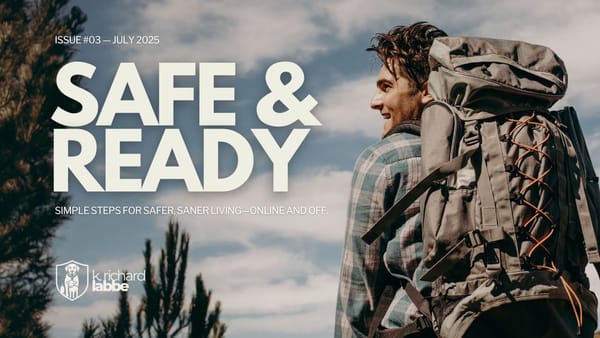Safe & Ready: A College Safety Starter Guide for Fall
College is coming. Are you prepared—not just for class, but for life?

Whether you’re heading off to a dorm, commuting from home, or logging in from your bedroom, this fall marks a fresh start—and a big step. And while most conversations focus on books, schedules, and roommates, there’s a quieter, more urgent topic that deserves our attention: how to live wisely in a world full of risks.
This guide walks through six practical areas that can help students—along with their families—start strong, stay protected, and move forward with peace of mind.
1. Digital Safety: Lock Down Your Logins—and Your Devices
Scammers and data thieves are watching for easy access—and college students are often the path of least resistance. They’re managing more logins, using more devices, and logging into networks they don’t control.
Here’s how to start the year with stronger digital defenses:
- Use strong, unique passwords for every account (school, email, bank, cloud storage).
- Turn on two-factor authentication (2FA) wherever you can—especially for email, banking, and school portals.
- Install a password manager to avoid reusing or forgetting passwords. Our recommendation? NordPass (affiliate link)
- Back up important documents regularly (cloud or encrypted drive).
- Keep all software updated, including your device’s operating system, browser, and antivirus tools.
- Be suspicious of urgent-sounding emails or texts—especially those claiming to be from tech support, campus IT, or financial aid.
And don’t forget your physical devices:
- Use a privacy screen on laptops if working in public or shared spaces. Be sure to get one for your specific device and model.
- Set a lock screen timer on your phone, tablet, and laptop.
- Turn on biometric access (Face ID or fingerprint) for sensitive apps and lock screens.
- Label your chargers and devices with your initials or name. Accidental swaps are common in study lounges.
- Never leave your tech unattended, even just to run to the restroom.
Heads up: Some students are being approached by “academic help” sites offering to take quizzes or write papers. These are often traps—unethical, illegal, and frequently tied to identity theft.
2. Dorm & Apartment Safety: Secure Your Space and Set Boundaries
Whether you’re on campus or off, your living space should offer rest, not risk.
- Use a portable door lock or wedge alarm when you’re in your room or apartment (affiliate links).
- Store valuables out of sight, and keep documents in a small lockbox or fireproof bag (affiliate links).
- Don’t prop doors or let people “follow” you into a secured building.
- Make sure your apartment windows and locks actually work.
- Invest in renter’s insurance—it’s inexpensive and can be a lifesaver.
Have a roommate? Talk about expectations early. What’s shared? What’s off-limits? Good boundaries create a better living environment—for everyone.
3. Vehicle & Travel Safety: Get There, But Get There Safely
If you're commuting, traveling, or even just walking campus after dark, take a few steps to stay ready:
- Keep your gas tank at least half full.
- Stash an emergency kit in your car: jumper cables, flashlight, charger (read more about our favorite - Goal Zero - here), snacks, water, and a blanket.
- Double-check rideshare info before getting in. Match the plate and driver name.
- Tell someone where you’re going—especially at night or to unfamiliar places.
- Never leave your backpack or tech in plain view inside your car.
Tip: If you're heading far from home, make sure someone knows your travel plans and that you’re equipped for things like a flat tire or breakdown.
4. Health, Emergency & Personal Safety: Build Habits Now for When It Matters Most
New surroundings, new pressures, new routines—it’s a lot. The best time to prepare is before something goes sideways.
- Add “In Case of Emergency” (ICE) contacts to your phone.
- Use the medical ID feature built into your smartphone.
- Know the location of your campus health center, urgent care, or 24-hour pharmacy.
- Carry a basic first aid kit and any medications you need (affiliate link).
- Stay alert when walking—especially at night. One earbud in, not two.
Stress and anxiety are part of many students' stories today. It helps to know your limits and your lifelines. Build rhythms that support your well-being: rest, prayer, fresh air, and friends who care.
“Above all else, guard your heart, for everything you do flows from it.”
—Proverbs 4:23
5. Home Setup for Online Students: Create a Safe and Focused Study Environment
Even if you’re attending school from home, you still need structure—and backup plans.
- Use a surge protector or battery backup to protect your tech (affiliate link).
- Back up important documents to the cloud or an external drive.
- Set up a workspace that limits distraction and supports good posture.
- Know where you’ll go if your internet fails—public library, coffee shop, etc.
- Make it clear when you’re “in class,” even if that just means wearing headphones.
A clear boundary between home and school—even if they share the same room—can help you stay focused and mentally present.
6. Financial & Identity Safety: Guard Your Future Now
From fake job offers to sketchy scholarship “services,” the threats here are real and widespread.
- Don’t trust unsolicited emails or texts asking for money, passwords, or personal details.
- Never pay upfront for a job, housing opportunity, or financial aid.
- Monitor your bank and credit accounts for unfamiliar charges.
- Use credit cards wisely—they offer stronger fraud protections than debit cards.
- Don’t store sensitive info (like Social Security numbers or bank details) on unsecured devices.
When it comes to your identity and your money, a little vigilance now can save you years of repair later.
BONUS TIP: Mental and Spiritual Anchoring
College stretches you—not just intellectually, but emotionally and spiritually.
This is a good time to ask:
Who am I becoming?
What will shape me this year?
Where can I find rest and clarity when things feel uncertain?
Find people who remind you of who you are—a solid church, a campus ministry (like Cru, Reformed University Fellowship, Young Life, etc.), mentors back home. Keep a rhythm of prayer, journaling, or Scripture reading—even if just a small passage a day.
Staying safe isn’t only about locks and passwords. It’s also about staying rooted.
For Parents and Mentors: What You Can Do
You don’t need to micromanage. But a few thoughtful steps can help your student feel supported, not smothered.
- Review emergency plans and backup options together.
- Make sure your student has their insurance info, key documents, and a list of contacts.
- Consider a healthcare proxy or FERPA form if your student is over 18.
- Offer wisdom, but leave room for growth.
Ask more questions than you answer. Listen well. Trust that they’re learning—even when it’s messy.
Do This Today: Quick Prep Checklist
- Add ICE contacts and set up your phone’s medical ID
- Turn on 2FA for key accounts
- Back up your files
- Pack a power bank, flashlight, and first aid kit
- Talk through emergency situations with someone you trust
- Make a short list of practices that keep you grounded—mentally, emotionally, and spiritually
Final Word
This next chapter is about more than syllabi and GPAs. It’s about learning how to stand on your own—wisely, faithfully, and well-prepared.
You don’t need all the answers. But you do need a plan. And you’re not in it alone.
Stay safe. Be ready. Online and off.




